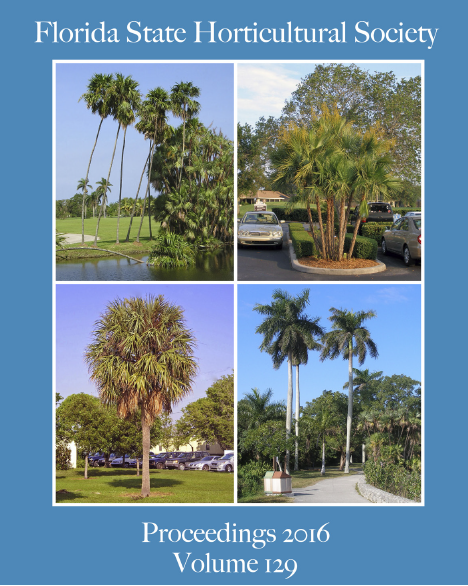Abstract
A survey of phytophagous mites and predators was conducted in 20 papaya orchards in southern Florida (Miami-Dade, Broward and Lee counties). Several phytophagous mites were found damaging papaya leaves. The spider mites Eutetranychus banksi (McGregor), Tetranychus urticae (Koch) and Eutetranychus sp. (Acari: Tetranychidae) were most abundant on the abaxial surface of mature leaves. These mites cause yellowing and a downward curling of the leaves. The broad mite, Polyphagotarsonemus latus (Banks) (Acari: Tarsonemidae) feeds on tender leaves as they emerge, causing shoot malformation. An eriophyid mite was also present, Calacarus flagelliseta Fletchmann, DeMoraes, and Barbosa (Acari: Eriophyidae). These mites prefer to feed on the adaxial surface of mature leaves, consequently the leaves curl up and progressively turn lighter green, yellowish, and then brown. The most abundant of the predatory mites found was Neoseiulus longispinosus (Banks) (Acari: Phytoseiidae). This Asian predator, reported for the first time in Florida in 2011, is well established in south Florida and comprised 86% of the predatory mite populations in our surveys. In laboratory studies N. longispinosus developed from egg to adult in 9 days. A study of its feeding habits showed a preference for nymphs, followed by eggs and adults of tetranychid mites. Neoseiulus umbraticus (Chant) and Amblyseius largoensis Muma were also present at lower numbers, as well as two commercially available phytoseiids, Amblyseius swirski Athias-Henriot and Phytoseiulus persimilis Athias-Henriot. The commercial species had been released for biocontrol in previous years; they comprised 13% and 0.01% of the predatory mite population, respectively.

